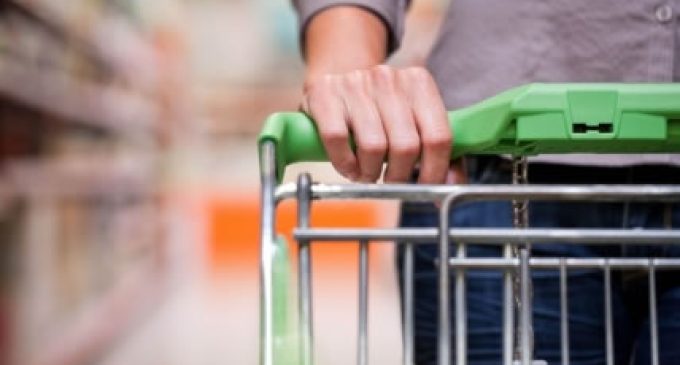UK Grocery Sales Rise by Fastest Rate Since 2013

The latest grocery market share figures from Kantar Worldpanel, for the 12 weeks ending 23 April 2017, reveal the overall market has grown by 3.7% – the fastest rate since September 2013 and worth almost £1 billion in additional sales to the grocery sector.
Fraser McKevitt, head of retail and consumer insight at Kantar Worldpanel, comments: “All 10 major retailers are in growth for the first time in three-and-a-half years, when we last saw like-for-like grocery inflation as high as it is now. While prices do look set to rise further, the current inflation rate of 2.6% is still below the average level experienced by shoppers between 2010 and 2014.
“A strong Easter also contributed to the market’s growth this period. In the past 12 weeks British shoppers splashed out £325 million on Easter eggs with almost three quarters of the population buying at least one. Consumers plumped for more premium confectionery lines this year – the average price paid for an Easter egg rising by 8.6% to £1.65 – while 20 million packs of hot cross buns were bought in the Easter week alone.”
Fraser McKevitt continues: “Premium own label lines are continuing to see huge growth and Morrisons has been making the most of their popularity among consumers. Its ‘The Best’ line is performing well following last year’s launch and has attracted more affluent shoppers through its doors, helping Morrisons become the fastest growing big four retailer. However, this growth is behind the overall market and Morrisons’ total market share has slipped 0.2 percentage points to 10.4%.
“Asda has increased year-on-year sales for the first time since October 2014 thanks to a quarter of a million additional shoppers and a strong performance online, though its overall share fell by 0.4 percentage points to 15.6%.
“Sainsbury’s sales rise of 1.7% is the greatest it has seen since June 2014, with growth coming from all three channels – its Local convenience stores, larger supermarkets and online. At a category level, Sainsbury’s is performing well in the fresh and chilled aisles – fruit, vegetables and salads are up by 2.6%, suggesting its ‘Food Dancing’ campaign is resonating with consumers eager to try more scratch cooking. The retailer is now concentrating on bringing Argos counters into many of its stores and looking to exploit the increased footfall, although stronger growth among its rivals meant market share fell to 16.1% in the past 12 weeks.”
Tesco returned to growth with sales up 1.9% after sales were hit last period by a late Easter. Its own label sales increased by 6%, growing across all price tiers – cheapest, standard and premium – while share fell by 0.5 percentage points to 27.5%.
Fraser McKevitt elaborates: “Ocado has doubled its share since late 2014 and now accounts for 1.3% of supermarket sales. The retailer is growing at 10.8% – second only to Aldi and Lidl and considerably ahead of the overall online grocery market, which currently has a growth rate of 7.8%. While fewer than 3% of British households have shopped with Ocado in the past 12 weeks these consumers are considerably more affluent than average, meaning the retailer performs well in high-value categories such as fresh fish, chilled drinks and breakfast cereals.”
Iceland, Aldi and Lidl, where sales rose by 9.3%, 18.3% and 17.8% respectively, all grew ahead of the market. Aldi and Lidl achieved new record high market shares of 6.9% and 5.0%, while Waitrose’s share was stable at 5.2% despite a 3.1% increase in sales helped by strong growth in its ‘Waitrose 1’ range. At Co-op, sales rose by 2.6% while market share fell by 0.1 percentage points to 6.1%.


































